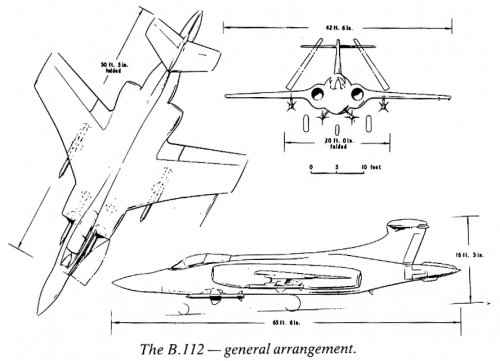- Joined
- 22 April 2012
- Messages
- 2,258
- Reaction score
- 2,306
Zen,
I am not sure that we can say what radar was intended as the armament situation remained so vague throughout the period though I agree that the radar ranging Mk2 is certainly a possibility if guided weapons come to the fore. May I ask where you get your reference for radar being intended for the Type 525? I can not find it in BSP?
A fully reheated Scimitar certainly makes life more interesting, a Mk2 version might take the 40 degree wing sweep and area ruling of the Type 556 and potentially a thinned version of that wing to putting it into a much higher performance category in line with the later variants and potentially above.
The twin engined issue has its roots in the types early conception with the desire being for climb performance resulting in as much power as possible being rammed into the lightest possible airframe. After that each new variant was just a development of the previous and kept the same basic fuselage layout. Apparently a single engined configuration was discussed as a research project only as the required redesign would push the project back 2.5 years. The single engined configuration appears to be based on a desire to reduce costs.
I am not sure that we can say what radar was intended as the armament situation remained so vague throughout the period though I agree that the radar ranging Mk2 is certainly a possibility if guided weapons come to the fore. May I ask where you get your reference for radar being intended for the Type 525? I can not find it in BSP?
A fully reheated Scimitar certainly makes life more interesting, a Mk2 version might take the 40 degree wing sweep and area ruling of the Type 556 and potentially a thinned version of that wing to putting it into a much higher performance category in line with the later variants and potentially above.
The twin engined issue has its roots in the types early conception with the desire being for climb performance resulting in as much power as possible being rammed into the lightest possible airframe. After that each new variant was just a development of the previous and kept the same basic fuselage layout. Apparently a single engined configuration was discussed as a research project only as the required redesign would push the project back 2.5 years. The single engined configuration appears to be based on a desire to reduce costs.

